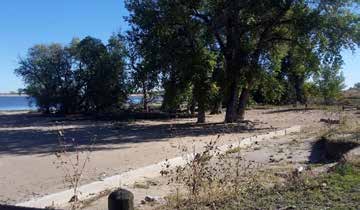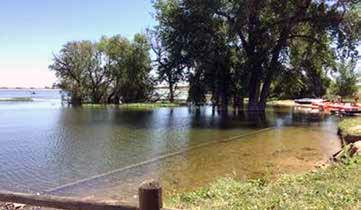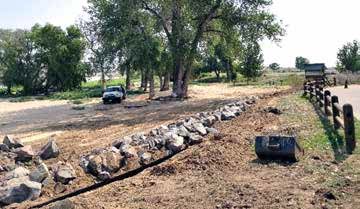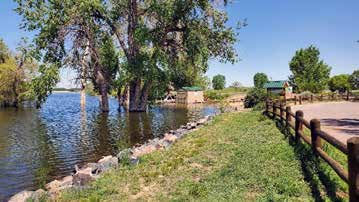“Lakespert” – Seawalls are for Seas
Steve Lundt, CLM
Natural lakes or reservoirs, they just don’t need walls at the shoreline. Here’s a great example. I look after Barr Lake (Colorado) that is just northeast of Denver. For many years, there was a seawall near the boat ramp that was intended to protect and stabilize the shoreline. It did the opposite (Figures 1 and 2).
How many lakes are out there that are still dealing with “OG” hard engineering of shorelines? Seawalls are for seas. Bank stability at Barr Lake was being impacted by higher fill levels and a dysfunctional seawall.
Removal and proper placement of larger rocks were the answer to crashing waves and higher waters (Figures 3 and 4). We have come a long way to understand how to stabilize shores, improve littoral habitat, and dissipate wave energy. There is still room to grow though.
As a lakespert that sometimes tries to be an armchair engineer, I do recommend no straight lines. There are never straight lines when it comes to nature, especially with water. Also, please don’t remove every woody stick – small, large, dead, or alive. Reservoirs do come with strict dam safety rules, but please don’t apply them to the rest of the shoreline.
Communication is my last bit of advice. At Barr Lake, the owners were removing all vegetation from a dike that borders the high-water line based on the rule of no vegetation within 10 feet of the base of a dam. Birders got wind of this and assumed all trees were coming down. The lack of communication on the project ruffled a few feathers to say the least.
Enjoy fall turnover.
 Steve Lundt, Certified Lake Manager, has monitored and worked to improve water quality at Barr Lake (Denver, Colorado) for the past 19 years. Steve is active with the Colorado Lake & Reservoir Management Association and is a past Region 8 director for NALMS and an active member since 1998.
Steve Lundt, Certified Lake Manager, has monitored and worked to improve water quality at Barr Lake (Denver, Colorado) for the past 19 years. Steve is active with the Colorado Lake & Reservoir Management Association and is a past Region 8 director for NALMS and an active member since 1998.





